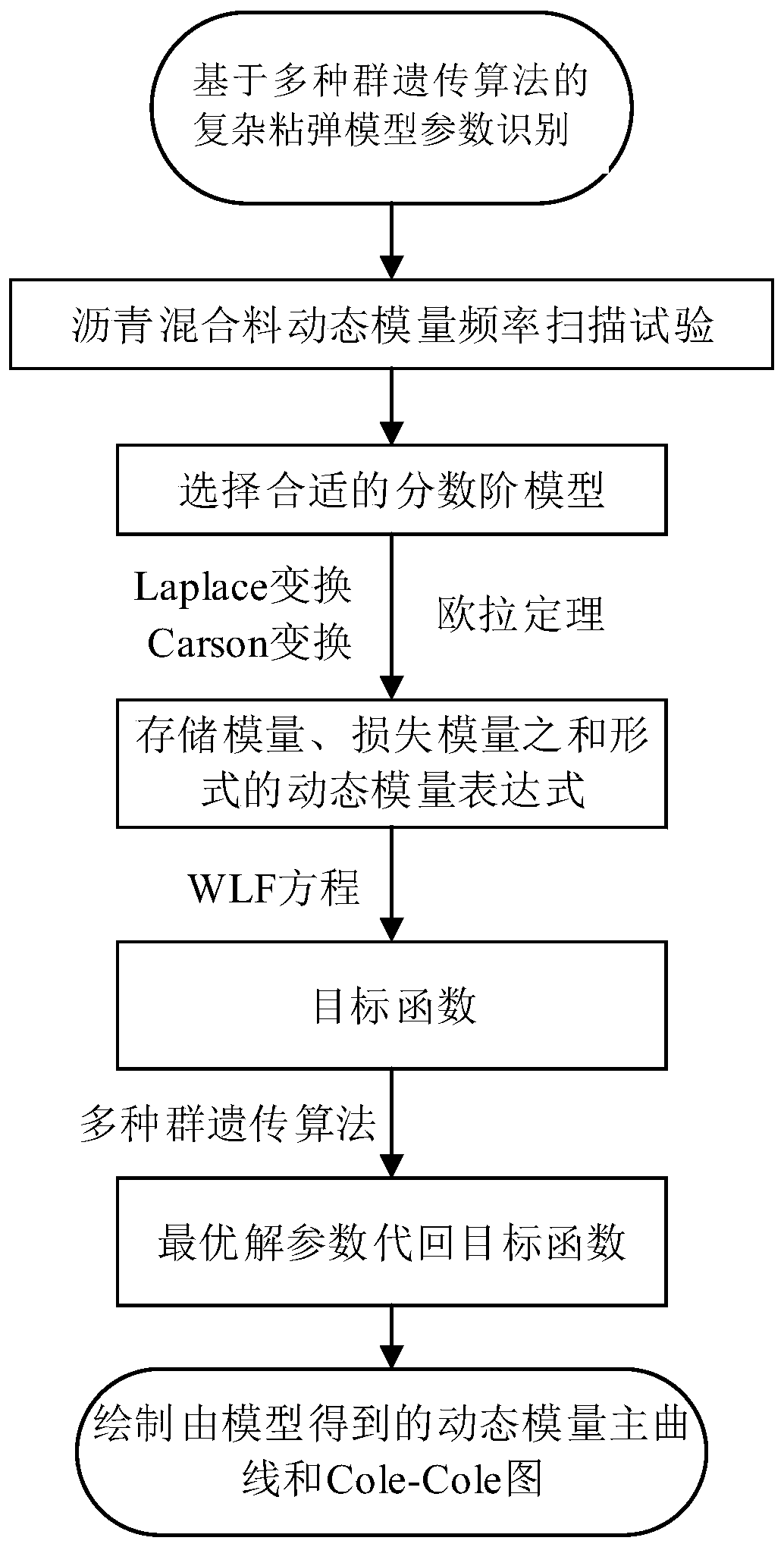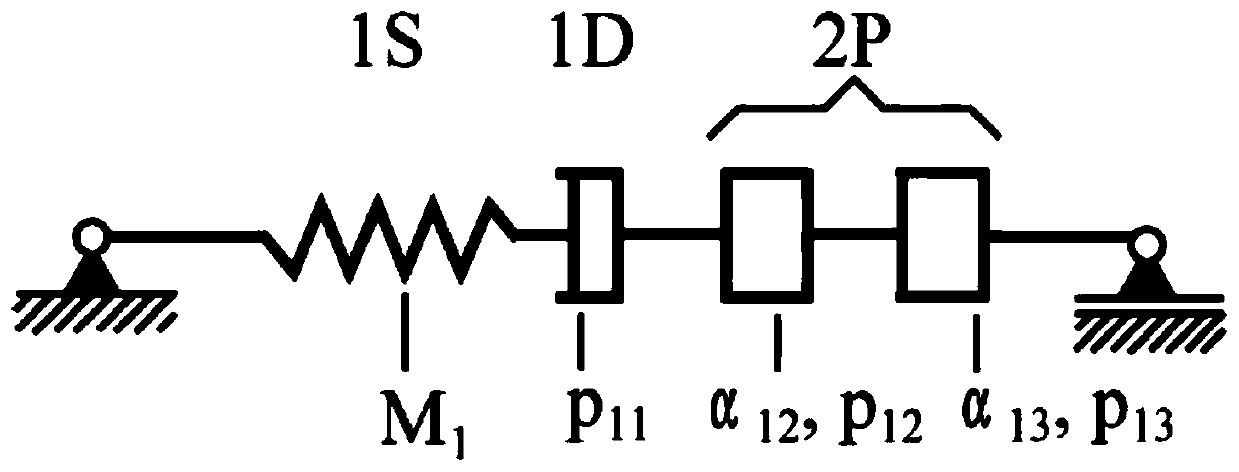Method for identifying fractional order viscoelastic model parameters based on multi-population genetic algorithm
A technology of model parameter identification and genetic algorithm, which is applied in the field of fractional viscoelastic model parameter identification, can solve the problem that the model parameter value cannot be identified
- Summary
- Abstract
- Description
- Claims
- Application Information
AI Technical Summary
Problems solved by technology
Method used
Image
Examples
specific Embodiment approach 1
[0030] Specific implementation manner one: such as figure 1 , figure 2 with image 3 As shown, the method for identifying parameters of a fractional viscoelastic model based on multiple population genetic algorithms in this embodiment includes the following steps:
[0031] Step 1. Perform a dynamic frequency sweep test on the unaged asphalt at a temperature of [-30,-10,0,10,20,30,40,50] degrees Celsius, and obtain that each temperature point has a frequency of [1 ,5,10,15,20,25,30,40,50,60,70] dynamic modulus value at Hz;
[0032] Step 2: Draw a Cole-Cole image (Cole-Cole image) according to the dynamic modulus value obtained in Step 1, and then select the fractional model as the 1S2P1D model based on the characteristics of the Cole-Cole diagram;
[0033] Combining the stress-strain relationship of the spring element, the viscous element and the fractional element in the 1S2P1D model, the stress-strain relationship of the 1S2P1D model in the Laplace domain can be obtained through La...
specific Embodiment approach 2
[0054] Specific embodiment two: this embodiment is different from specific embodiment one in that the stress-strain relationship of the spring element, the viscous pot element and the fractional element in the 1S2P1D model combined in the second step is through Laplace (Laplace) The transformation obtains the stress and strain relationship of the 1S2P1D model in the Laplace domain; the specific process is:
[0055] Combining the stress-strain relationship of the spring element, the viscous pot element and the fractional element in the 1S2P1D model, the stress-strain relationship of the 1S2P1D model in the Laplace domain is obtained by Laplace transformation as shown in formula (1):
[0056]
[0057] Among them: s is the independent variable in the complex number domain, Represents stress, Represents strain, M 1 Is the spring modulus, α 12 And α 13 Are all fractional sticky pot orders, p 11 Is the coefficient of linear viscosity, p 12 And p 13 All are the fractional viscosity coeff...
specific Embodiment approach 3
[0061] Specific embodiment three: this embodiment is different from specific embodiment two in that in the second step, Carson transform (Kasson transform) is performed on the stress and strain relationship of the 1S2P1D model in the Laplace domain to obtain the frequency domain expression of the dynamic modulus According to Euler’s theorem, the frequency domain expression of dynamic modulus is expressed as the sum of storage modulus and loss modulus; according to the influence of temperature on the parameters of the 1S2P1D model, the parameters of the 1S2P1D model considering the temperature effect are obtained; its specific The process is:
[0062] Carson transform formula (2) to obtain the frequency domain expression of dynamic modulus E(iω), the frequency domain expression of dynamic modulus is shown in formula (3):
[0063]
[0064] Among them: i is the imaginary unit, ω is the loading frequency;
[0065] According to Euler's theorem, the frequency domain expression of the dyna...
PUM
 Login to View More
Login to View More Abstract
Description
Claims
Application Information
 Login to View More
Login to View More - R&D
- Intellectual Property
- Life Sciences
- Materials
- Tech Scout
- Unparalleled Data Quality
- Higher Quality Content
- 60% Fewer Hallucinations
Browse by: Latest US Patents, China's latest patents, Technical Efficacy Thesaurus, Application Domain, Technology Topic, Popular Technical Reports.
© 2025 PatSnap. All rights reserved.Legal|Privacy policy|Modern Slavery Act Transparency Statement|Sitemap|About US| Contact US: help@patsnap.com



